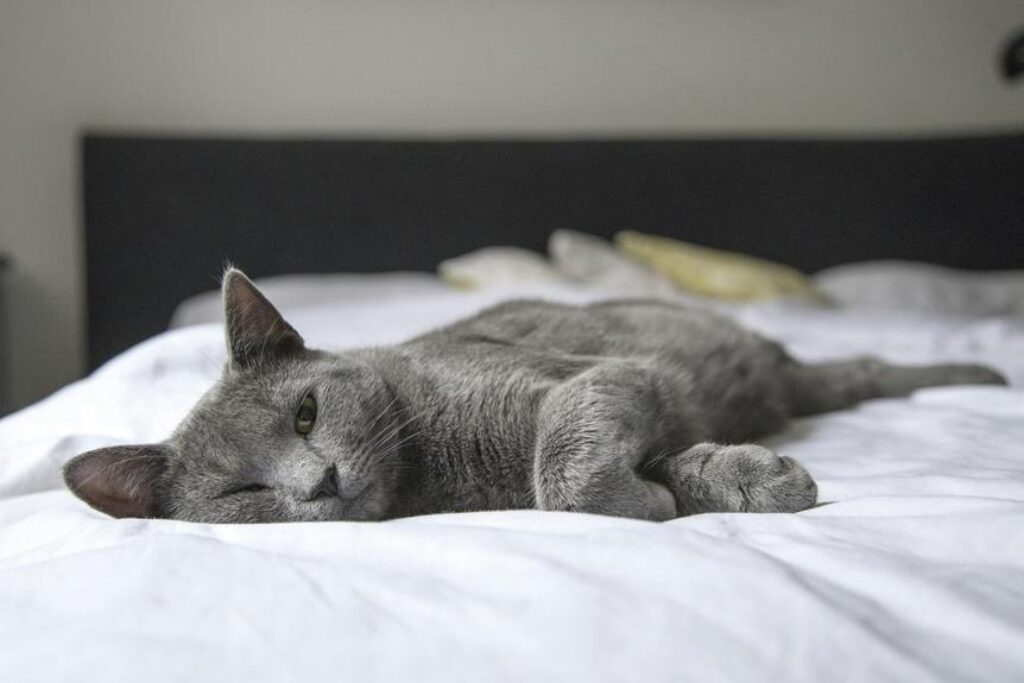
To prevent cats from destroying your furniture, you must consider their natural instinct to scratch and provide appropriate outlets for this behavior. While offering scratching posts and deterrents can be effective, there are other crucial factors to consider. Understanding your cat’s specific preferences and habits, along with consistent training methods, can play a significant role in protecting your furniture. Remember, a holistic approach that combines various strategies tailored to your cat’s needs is often the most successful in preventing furniture damage.
Cat-Proofing Your Furniture
To prevent your feline friend from wreaking havoc on your furniture, consider using deterrents and protective covers. Cats often scratch furniture to mark their territory or sharpen their claws. One effective deterrent is double-sided tape, which feels unpleasant on their paws. You can also try citrus-scented sprays or aluminum foil on the furniture, as cats dislike these textures and smells.
Another option is to provide your cat with designated scratching posts or pads. These should be tall enough for your cat to stretch fully while scratching. Place them near the furniture they tend to target. Encourage your cat to use the scratching posts by sprinkling catnip on them or using toys to attract them. Reward your cat with treats or praise when they use the scratching post instead of the furniture.
Additionally, you can cover your furniture with protective materials like plastic or thick blankets. These barriers can deter your cat from scratching while you work on redirecting their behavior towards appropriate surfaces. Remember, consistency and patience are key in training your cat to leave your furniture unscathed.
Providing Alternative Scratching Surfaces
Consider incorporating designated scratching posts or pads near your furniture to provide alternative surfaces for your cat. Cats have a natural instinct to scratch, so providing them with appropriate scratching surfaces can help deter them from damaging your furniture. Scratching posts come in various sizes, shapes, and materials, so you can choose one that suits your cat’s preferences. Some cats prefer vertical posts, while others may prefer horizontal scratching pads. It may take some trial and error to find the right scratching surface that your cat enjoys using.
Place the scratching posts or pads strategically near the furniture that your cat tends to scratch. You can encourage your cat to use the scratching post by placing treats or catnip nearby. Additionally, you can gently guide your cat to the scratching post and reward them with treats when they use it. By providing alternative scratching surfaces and positive reinforcement, you can help prevent your cat from destroying your furniture.
Using Deterrents and Repellents
Encourage your cat to avoid scratching furniture by utilizing deterrents and repellents specifically designed to redirect their behavior elsewhere. There are various options available, such as double-sided tape, which cats dislike the texture of and will often avoid scratching.
You can also use citrus sprays or citrus-scented products on the furniture, as many cats find the smell unpleasant. Another effective method is to use motion-activated deterrent devices that emit a sound or a puff of air when the cat approaches the furniture.
Additionally, you can try placing aluminum foil or plastic wrap on the furniture, as cats typically don’t like the sensation under their paws. It’s essential to be consistent with the use of deterrents and repellents to effectively train your cat to avoid scratching furniture.
Training and Behavior Modification
Utilize positive reinforcement techniques to effectively modify your cat’s behavior and encourage appropriate scratching habits. When your cat scratches the designated scratching post instead of the furniture, reward them with treats, praise, or playtime. This positive association will encourage them to repeat the desired behavior.
Consistency is key when training your cat. Ensure that the scratching post is easily accessible and placed near their favorite resting spots. Redirect your cat to the post whenever you catch them scratching furniture. Be patient and persistent in reinforcing the behavior you want to see.
Avoid punishing your cat for scratching furniture as this can create fear or anxiety. Instead, focus on redirecting their behavior towards the scratching post. Consider using toys or catnip to entice your cat to use the post.
Regularly trim your cat’s nails to minimize the impact of scratching on furniture. Additionally, providing environmental enrichment, such as climbing structures and interactive toys, can help satisfy your cat’s natural scratching instincts. By implementing these positive reinforcement techniques and environmental enhancements, you can effectively prevent your cat from destroying furniture.
Seeking Professional Help
If you’re struggling to address your cat’s destructive behavior despite consistent training efforts, seeking professional help from a certified animal behaviorist or veterinarian may be beneficial. These experts can conduct a thorough evaluation of your cat’s behavior to determine the underlying cause of their destructive habits. A certified animal behaviorist will create a customized behavior modification plan tailored to your cat’s specific needs. They can provide you with effective strategies to redirect your cat’s destructive tendencies and promote more appropriate behavior.
Veterinarians can also offer valuable insights into your cat’s behavior. They can rule out any potential medical issues that might be contributing to the destructive behavior. Sometimes, cats exhibit destructive tendencies due to health problems, anxiety, or stress. By consulting with a veterinarian, you can ensure that your cat is in good physical health and address any medical concerns that could be impacting their behavior.
Pet supplies














